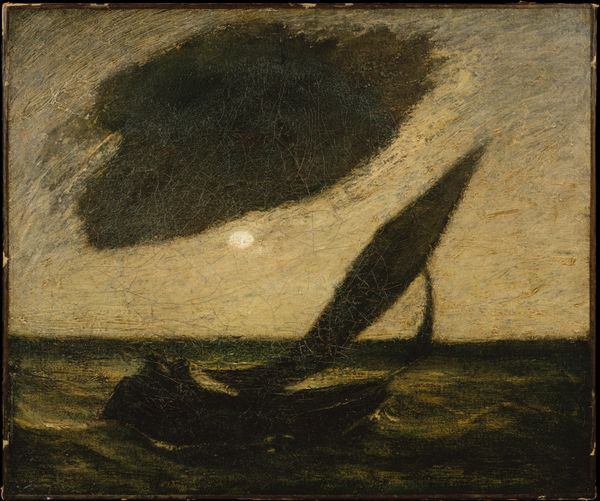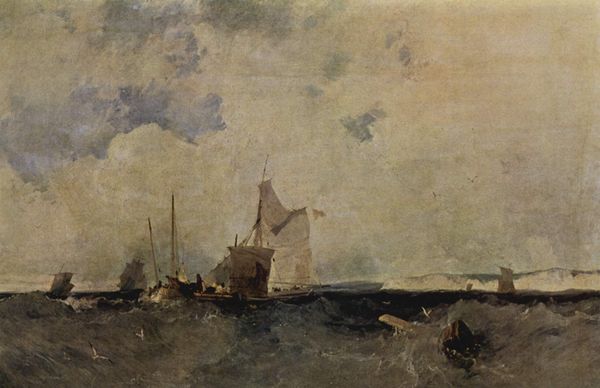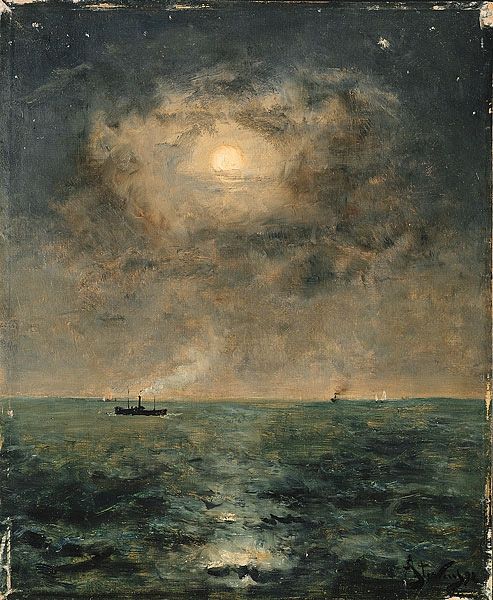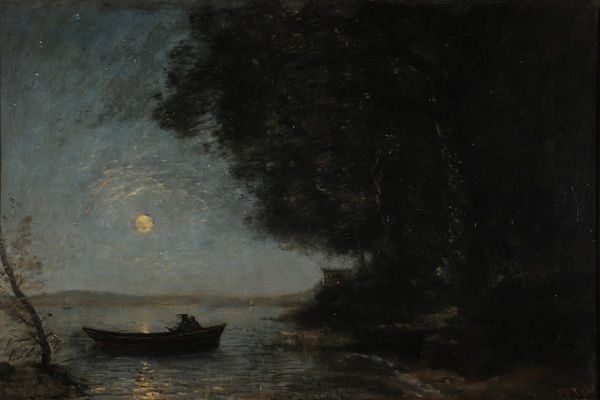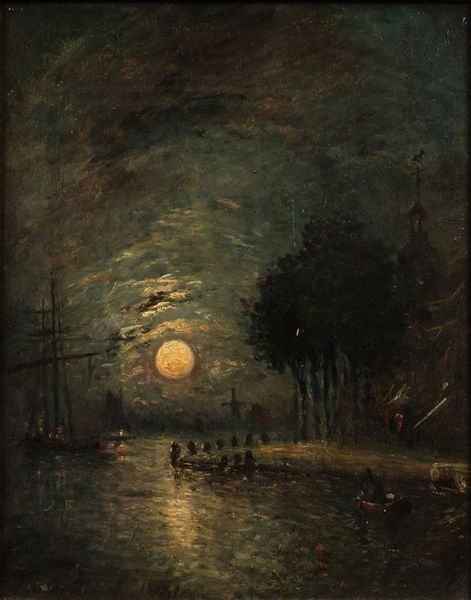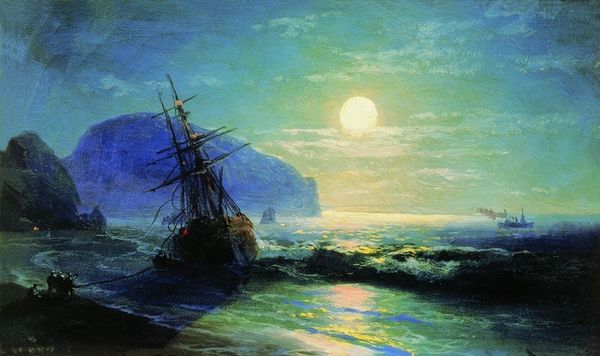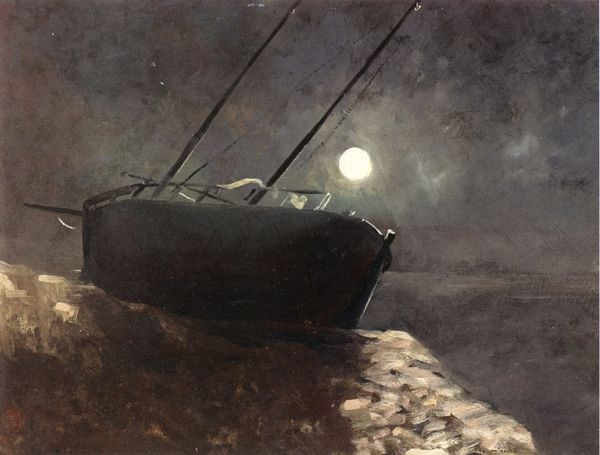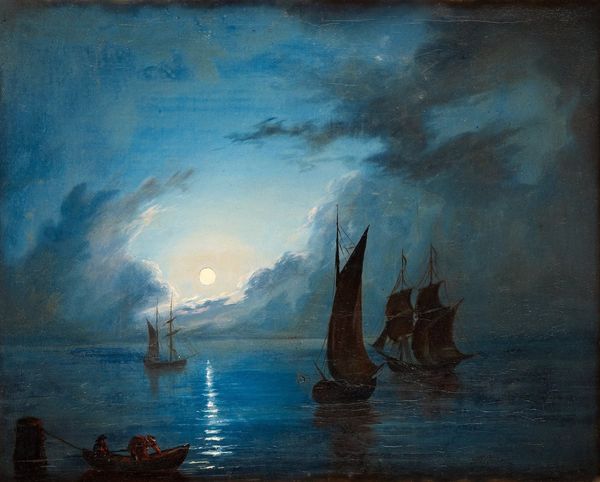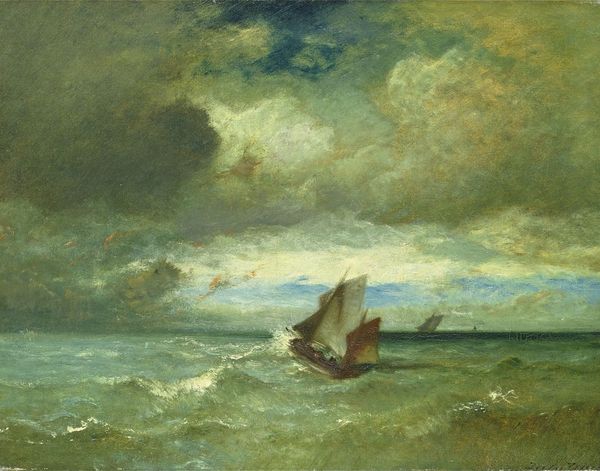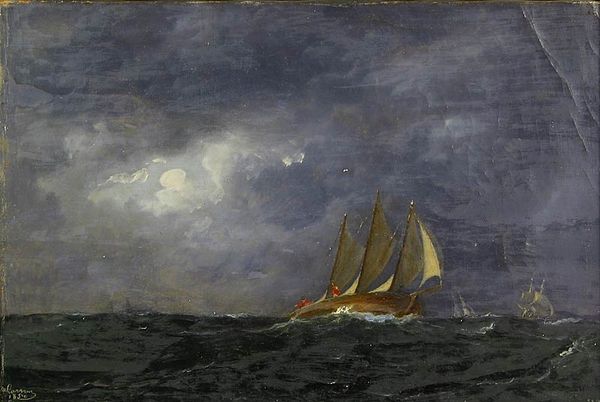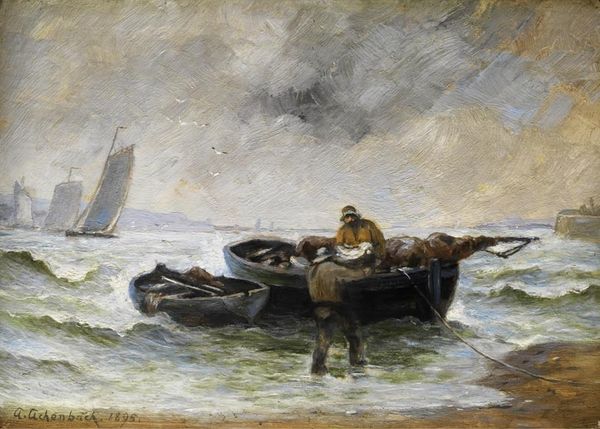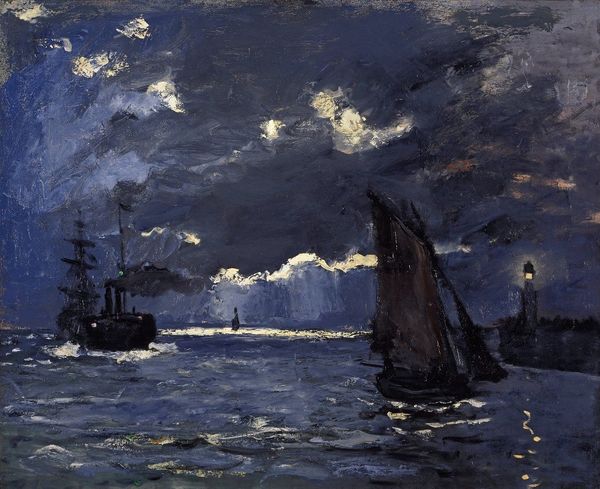
Copyright: Public domain
Curator: Ryder's "Moonlight," painted in 1887, captures the rough energy of a lone boat battling against a dark sea. Editor: It’s a compellingly bleak scene, isn't it? The scale feels vast, with that tiny boat swallowed by the immensity of the sky and water. It speaks to isolation, a vulnerability against overwhelming forces. Curator: Definitely. Ryder's distinctive impasto technique contributes significantly. He layered oil paint so thickly, you can almost feel the textures. There's a raw physicality there, echoing the labor and maritime traditions linked to these boats, hinting at lives dependent on unpredictable elements. Editor: I agree, the surface is incredibly active. I’m particularly drawn to the subdued palette: the churning greens, grays and blacks, contrasted by the pale light breaking through the clouds. These are not just colors; they construct mood and space. The symbolic power is immense: water as subconscious, the moon as a beacon, the vessel of self. Curator: Right, and those unconventional choices also invite questions. Who was using this kind of boats at this time? Who are the audiences that Ryder hoped to impress with the landscape of a working vessel at this time? These questions are worth looking at when considering what constitutes an artist and how materials take on lives of their own, in relationship to economic conditions. Editor: From a structural viewpoint, Ryder uses the circular form of the moon to pull the composition together, contrasting against the jagged, linear waves. Even the placement of the sail is deliberate, pointing almost desperately towards that weak point of light in the heavens. The visual rhetoric becomes a compelling study in despair and perhaps faint hope. Curator: Perhaps despair can teach us something more productive. Considering the socio-historical framework offers perspectives on human effort, resilience, and what materials are needed to achieve our dreams and aims. Editor: Ryder presents the romantic drama in its most essential visual components: light, form, and texture combining into something that exceeds historical moments. Curator: A combined reflection that emphasizes artistic innovation while engaging in socio-cultural critique seems a fair ending, don't you agree? Editor: Precisely, allowing viewers multiple entry points, and a deeper understanding of art's purpose in our shared human experience.
Comments
No comments
Be the first to comment and join the conversation on the ultimate creative platform.
